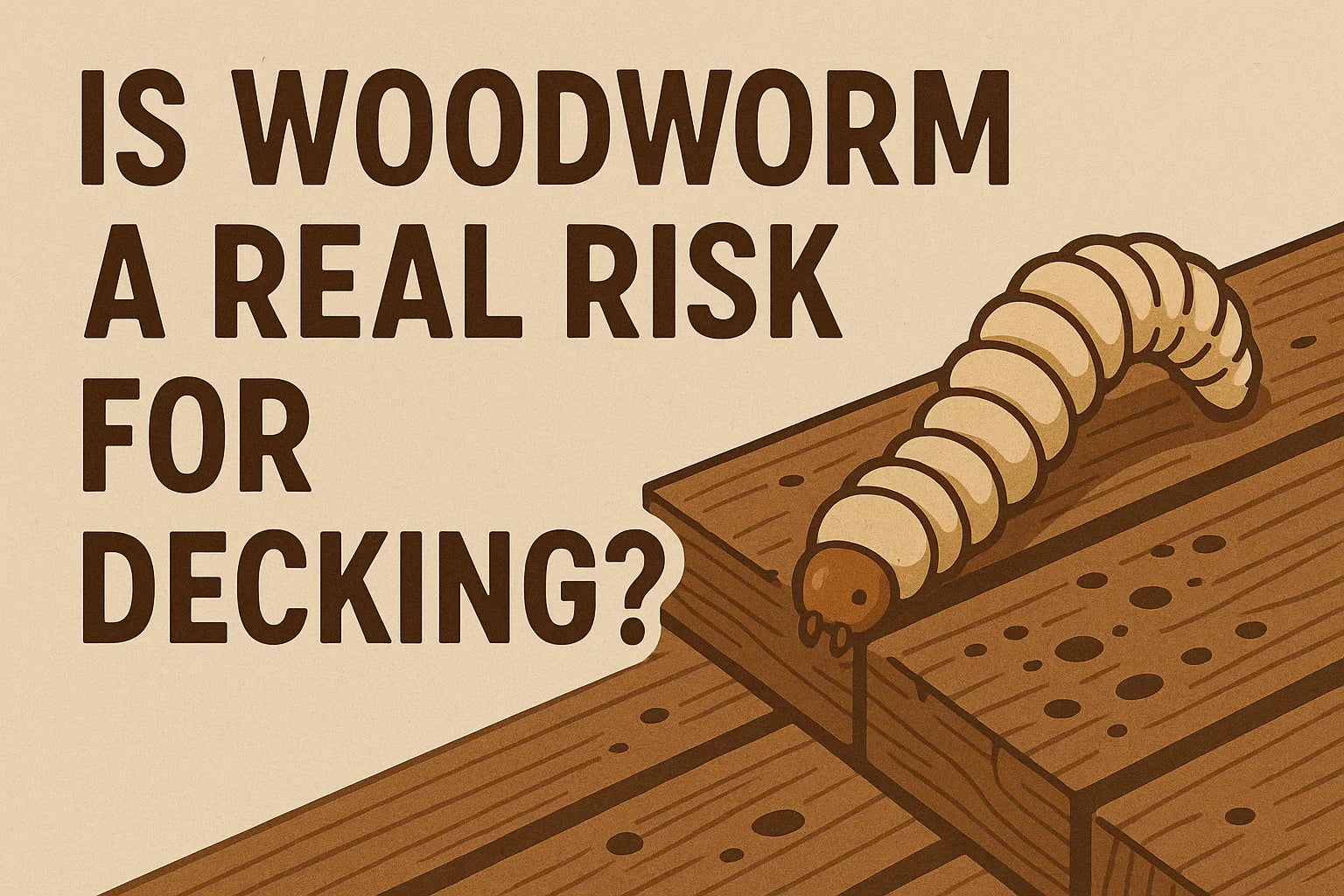If you’ve invested time and money into building or maintaining a beautiful deck, the last thing you want is for it to fall victim to pests. One of the most feared — and often misunderstood — threats to timber is woodworm.
But how real is the risk to decking in the UK? And if there is a danger, what can you do about it?
Let’s dive deep into the facts, warning signs, and — importantly — how to prevent and treat woodworm in decking. Whether you're a homeowner, tradesperson, or DIY enthusiast, this guide is packed with practical advice. And if you're looking for reliable woodworm treatments, decking fixings, or timber preservation products, we’ve got you covered at DIY Refurb.
What Is Woodworm, Exactly?
Despite the name, woodworm isn’t actually a worm — it's the larval stage of several wood-boring beetles. The most common in the UK is the Common Furniture Beetle (Anobium punctatum), but others like the House Longhorn Beetle or Deathwatch Beetle can cause damage too.
These pests lay eggs in timber, and when the larvae hatch, they burrow through the wood for several years before emerging as adult beetles — often leaving behind those telltale small round holes and fine dust, known as frass.
Is Woodworm a Real Risk for Decking in the UK?
The Short Answer: Yes — but it’s uncommon
Decking in the UK can suffer from woodworm infestation, but it's not very common, especially when the timber is properly treated and maintained.
When Decking Becomes Vulnerable
Even treated timber can become vulnerable under certain conditions:
- Poor drainage beneath the decking, allowing moisture build-up.
- Shaded or overgrown areas that prevent sunlight and airflow.
- Untreated or low-grade softwood used in DIY or budget decking.
- Neglected maintenance, where preservatives wear off and water ingress begins.
How to Spot the Signs of Woodworm in Decking
- Small, Round Exit Holes – typically 1-2 mm in diameter.
- Frass (Wood Dust) – powdery dust near holes or below boards.
- Crumbly or Weak Timber – may collapse or flake when probed.
- Sightings of Beetles – often in warmer months from May to September.

How to Prevent Woodworm in Decking
- Use Pressure-Treated Timber – start with BS8417-compliant timber.
- Maintain Your Deck Regularly – clean and re-oil or preserve annually.
- Ensure Good Drainage and Airflow – raise decking and trim nearby vegetation.
What to Do If Your Decking Has Woodworm
- Inspect and Assess – determine how widespread the damage is.
- Apply a Woodworm Treatment – such as boron-based solutions.
- Reinforce with Timber Preservative – available in our timber protection range.
- Replace Severely Damaged Sections – use high-quality fixings for long-term durability.

🪵 Woodworm Risk in Decking – Comparison Table
| Condition | Risk of Woodworm | Why It Matters |
|---|---|---|
| Pressure-treated softwood | Low | Treated timber is infused with preservatives that deter wood-boring insects. |
| Untreated softwood | High | Softwoods are porous and inviting to insects when not treated or sealed properly. |
| Regularly oiled and maintained deck | Low | Decking oils and preservatives keep moisture and pests out. |
| Damp, shaded location | Medium to High | Moisture and low ventilation can mimic indoor conditions favoured by woodworm. |
| Well-ventilated, sunny location | Low | Sunlight and airflow create a hostile environment for wood-boring larvae. |
| Decking over damp soil with no airflow | High | Persistent damp encourages both rot and insect infestation. |
| Damaged or rotting boards | High | Woodworm often attacks already weakened or moist timber. |
| Indoor timber (e.g. floorboards, beams) | Very High | Indoor, damp, and unventilated wood is the most common site of woodworm infestations. |
Final Thoughts: Don’t Let Woodworm Wreck Your Deck
While woodworm isn’t the most common decking issue in the UK, it can strike — particularly in damp, shaded, or neglected environments. The key is to choose the right materials, maintain your deck regularly, and act fast if you spot signs of damage.
💡 Have Questions?
Call or email beforehand for expert help, and advice on your purchase.



















